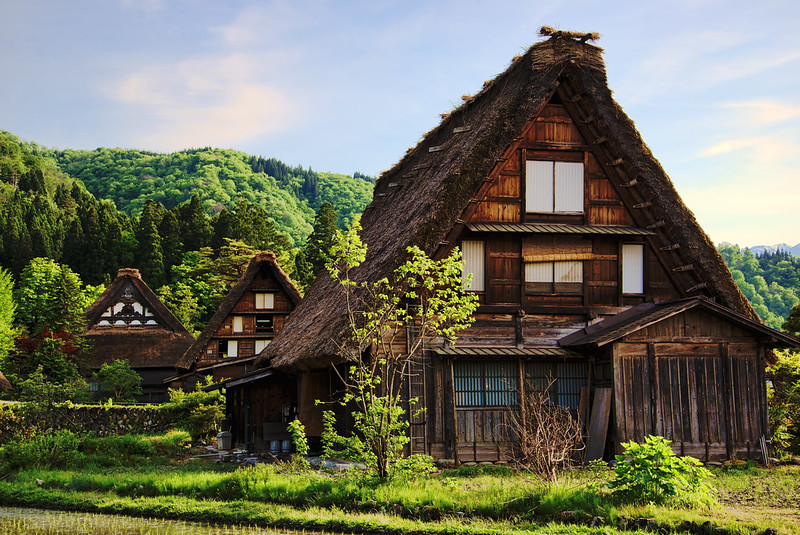May 30, 2022
Let’s go to Shirakawa-go in Gifu!
Japanese often talk about the majesty of their four seasons (conveniently forgetting the fifth, the rainy season). Still, if you live in a city like Nagoya, you could be forgiven for thinking that summer generally slides into winter and spring into summer with barely a by your leave. If you head up to Shirakawa-go in northern Gifu Prefecture, you can slip back into a time when those four seasons are more pronounced in a land that time has almost entirely forgotten.
Historical, natural beauty
Nestled between the remote mountains above the Shogawa River Valley that meanders from Gifu Prefecture to Toyama Prefecture, the villages of Shirakawa and Gokayama are areas of such natural beauty that they were Designated UNESCO World Heritage Sites in 1995.
As well as stunning valley views, the area is best known for its traditional gassho-zukuri farmhouses, some of which originate from the late eighteenth century. The term ‘gassho-zukuri’ means “constructed like hands in prayer,” a reference to their steepled thatched roofs, which take on the appearance of a Buddhist monk’s hands held together in prayer. It is an architectural style not dissimilar to that found in the mountainous regions of northern Europe, developed over the generations to withstand the heavy snowfall the area sees in winter.
A cultural experience like no other
The area’s harsh climate meant villages were isolated for many months of the year, meaning that the region was considered wild and rarely visited by outsiders. However, this has led to a unique culture, unlike others in Japan.

It also meant that the inhabitants had to be almost entirely self-sufficient. While the unusual architectural style of the gassho-zukuri makes for picturesque views from the outside, they also have practical uses inside. Numerous families would reside together, and the roofs, made by way of nailless carpentry, make spacious attic areas for cultivating silkworms.
Visiting Shirakawa-go
Of the more than 40 buildings, many remain living homes for the ancestors of those who first built the gassho-zukuri, but some are open to the public and, as such, make for a fascinating place to visit on a day trip or as part of an excursion to the nearby Takayama, no matter the time of year.

Furthermore, should you so wish, it is possible to stay the night in one of the dozen-or-so buildings which now function as family-run lodgings known as minshuku. With a rustic atmosphere, traditional tatami rooms, and breakfast and dinner cooked on open ‘iori’ fireplaces, it is an experience akin to stepping back in time and an experience highly recommended for anyone wanting to enjoy something very different from the average stay in Japan;
Shirakawa-go details
With bus lines from Takayama and Nagoya, the village of Ogamichi is the easiest to access and is most popular with tourists. However, this does mean that finding minshuku is more difficult.
Where: Ogimachi, Shirakawa, Ono District, Gifu 501-5627 (map)
Gokayama is a little more remote, and it is advised that you approach by car rather than public transport.
Where: Gokayama, Ainokura Nanto, Toyama 939-1915 (map)
For further information, check out the Shirakawa-go tourism websites here or here.
Image by Richard Cassan via flickr.com [CC BY NC 2.0]
Image by David Kosmos Smith via flickr.com [CC BY NC 2.0]
Image by Toshihiro Gamo via flickr.com [CC BY NC 2.0]
Image by via flickr.com [CC BY NC 2.0]


About the author